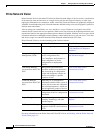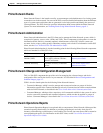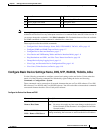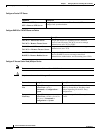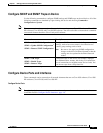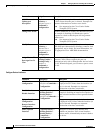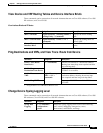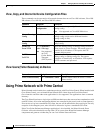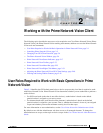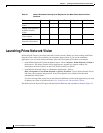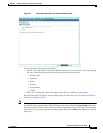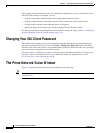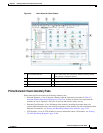
1-10
Cisco Prime Network 4.0 User Guide
OL-29343-01
Chapter 1 Setting Up Devices and Using the GUI Clients
Using Prime Network with Prime Central
View, Copy, and Overwrite Device Configuration Files
These commands can be executed on all network elements that run on Cisco IOS software, Cisco IOS
XR software, Cisco NX OS, and Cisco IOS XE softwar
View Users (Telnet Sessions) on Device
Using Prime Network with Prime Central
Prime Network can be installed as a standalone product or with Cisco Prime Central. When installed with
Cisco Prime Central, you can launch Prime Network GUI clients from the Cisco Prime Portal.
Cross-launch to and from other suite applications is also supported. The applications share a common
inventory.
The Cisco Prime Portal uses a single sign-on (SSO) mechanism so that users need not reauthenticate with
each GUI client. All session management features are controlled by the portal (such as client timeouts).
If a user tries to log into a standalone GUI client, the user will be redirected to the portal login. The only
exception is the emergency user, who will still be allowed to log into a standalone GUI client.
If the Cisco Prime Performance Manager application is also installed, the Prime Network Event
Collector will receive threshold crossing alarm (TCA) events from Prime Performance Manager
components and generate a ticket that you can view in Prime Network Events.
Command Navigation Description
Write memory NE > Commands >
Configuration
Overwrites the startup-config file with the current
running-config.
Note Not supported on Cisco IOS XR devices.
Show > Running
Config
NE > Commands Displays the contents of the device’s current
running-config (which can be different from the
running-config on file).
Show > Startup
Config
Displays the contents of the device’s current
startup-config.
From FTP
From TFTP
NE > Commands >
Tools > File copy
Note Not supported
on Cisco
Carrier Packet
Transport
(CPT) System.
Copies the starting-config or running-config file from a
remote source to a local location. The remote source is
identified by its IP address. FTP requires the FTP
username and password.
To FTP
To TFTP
Copies a local configuration file to a remote destination’s
starting-config or running-config file. The remote
destination is identified by an IP address. FTP requires
the FTP username and password.
Command Navigation Description
Users (Telnet Sessions) NE > Commands > Show Provides details about the device’s current
Telnet sessions.



